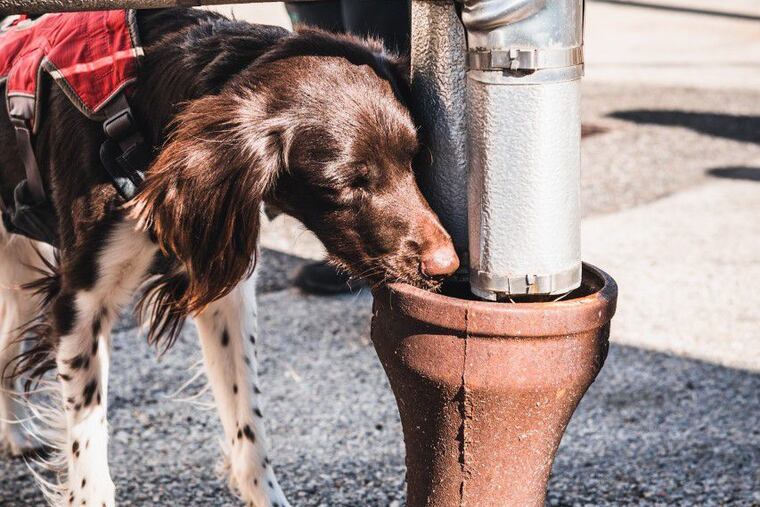Spotted lanternflies in Pa. have a new enemy: Dogs trained to detect their eggs
Preliminary results showed that the dogs were able to recognize live eggs with up to 95% accuracy.

As the weather cools, spotted lanternflies are starting to lay their eggs on tree trunks, branches, shrubs, and outdoor furniture. Enter their newest foe: Scent detection dogs.
A new training program at the University of Pennsylvania School of Veterinary Medicine is teaching dogs to recognize the scent of spotted lanternfly egg masses, which usually contain between 35 and 50 eggs, so they can be destroyed before they hatch. The masses can be found on trees and shrubs in backyards and parks, but others can be difficult for humans to find because they are in places protected from wind and harsh winters, such as underneath grills.
The program, run by the Penn Vet Working Dog Center and funded by a grant from the Department of Agriculture, comes at a critical time. As of Aug. 31, there were nearly 63,000 public reports of the spotted lanternfly in Pennsylvania this year, an increase of nearly 72% from the same time period last year. Not only can the invasive species damage trees, but it also poses a threat to Pennsylvania agriculture.
» READ MORE: Pa.'s first spotted lanternfly hatch of the year found in Philadelphia near Penn, Drexel
“The basis of everything we do at the Working Dog Center is trying to fix different problems for humans with dogs,” said Jennifer Essler, a postdoctoral researcher helping to lead the project. “Training the dogs to find the eggs was similar to training them to find any other odor. The dogs we used were already trained to find odors, so we just added this one to their repertoire.”
Researchers first began to train three dogs last December. The dogs, which included a Labrador retriever, a German shepherd, and a Small Münsterländer, were taught to recognize the scent of dead egg masses in a laboratory setting. Essler said the researchers used dead eggs so the dogs could be trained through the summer, when there are no live egg masses.
After the dogs learned to differentiate the scent of lanternfly egg masses from different types of tree material — where they are most known to lay their eggs — researchers asked them to identify live masses in other common places they can be found, such as on the bottoms of cars and under wooden pallets. Preliminary results showed that the dogs were able to recognize live eggs with up to 95% accuracy.
Essler said that while some lanternflies lay their eggs near the tops of trees, dogs can help find masses closer to the ground.
“Lanternflies are kind of generalists, especially when you get to areas where there are hundreds of thousands of them,” she said. “Eggs end up everywhere, even on things that humans move.”
Egg masses, which look like grayish splotches of mud or mortar, are fairly easy to remove. Experts say that the best way to remove the eggs is to scrape them with a credit card or butter knife into a zipper-sealed plastic bag that contains rubbing alcohol or hand sanitizer, or they can be squished directly.
Researchers plan to train the next group of dogs this fall. One of the new students, an 18-month-old German shepherd named Lucky, will be employed as the state’s first spotted lanternfly scent detection dog by the Department of Agriculture after she graduates.
Essler is confident that Lucky will do a terrific job in her new role.
“The dogs love it,” she said. “Some people are like, ‘How can you make these dogs work?’ They were bred to work. If they don’t work, they go absolutely crazy. So we always try to place dogs in careers where they’ll be happy.”